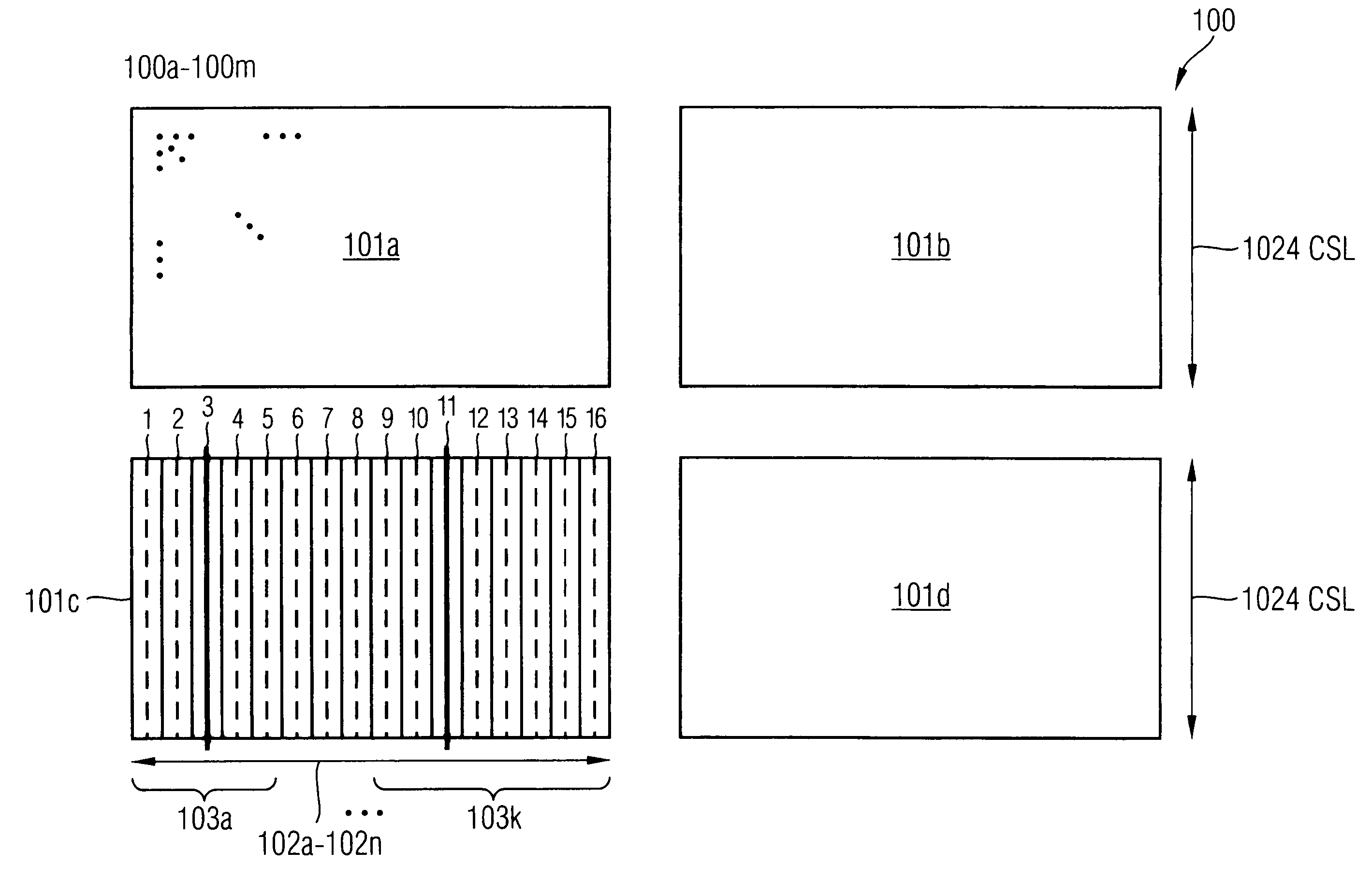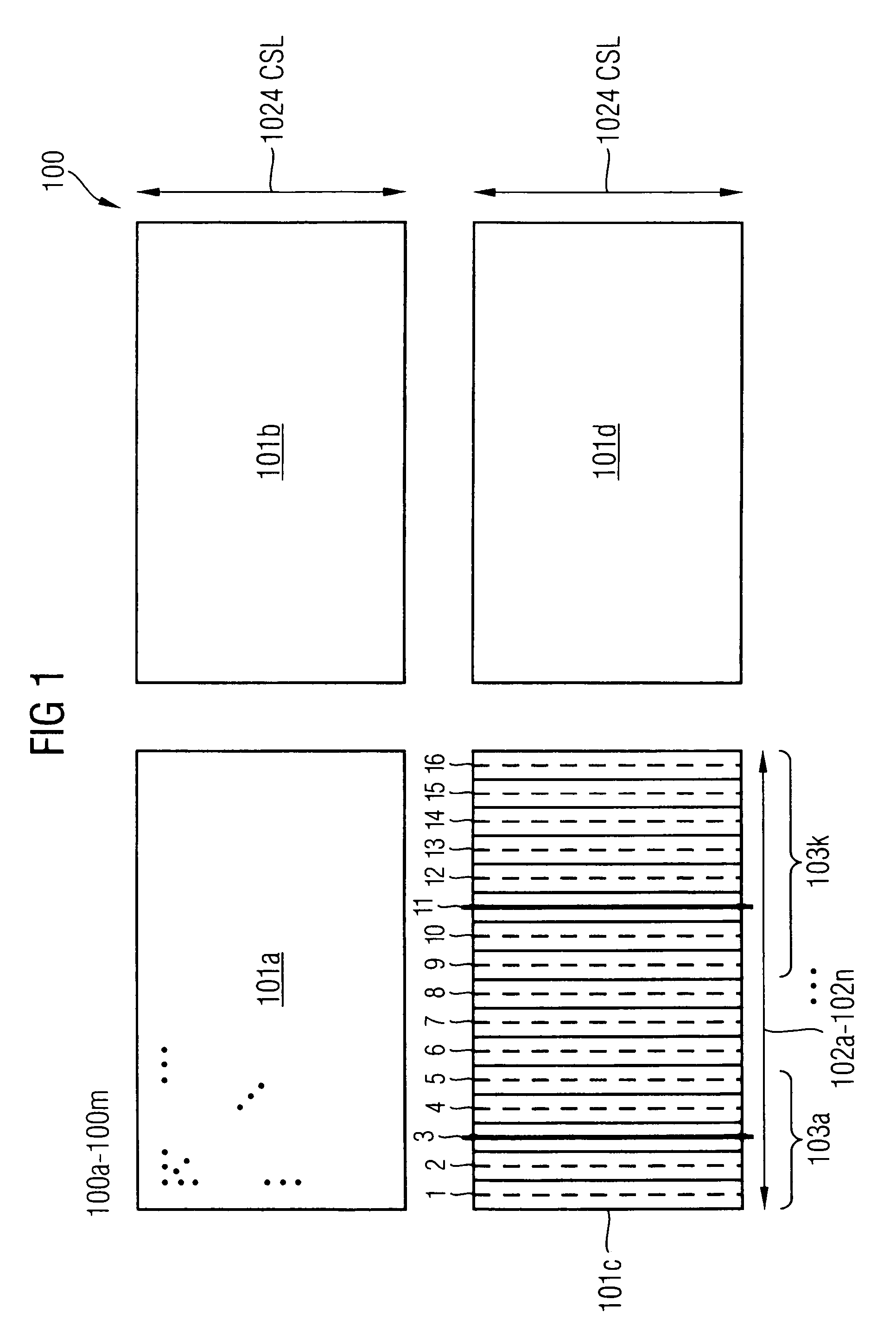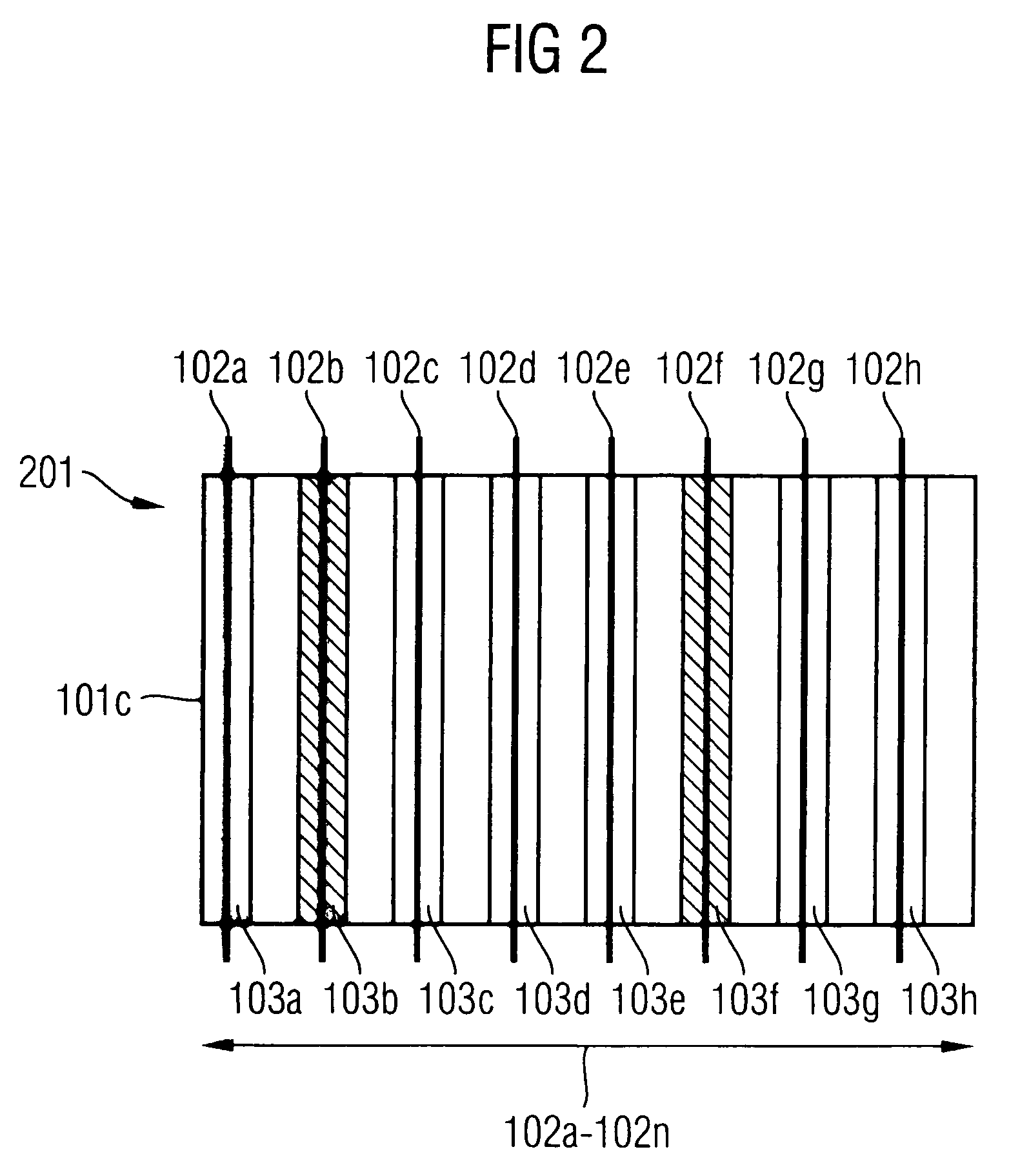Method for activating a plurality of word lines in a refresh cycle, and electronic memory device
a technology of electronic memory device and refresh cycle, which is applied in the direction of information storage, static storage, digital storage, etc., can solve the problems of reducing the charge or the storage of information reducing the charge or the storage of information, and reducing the charge of information stored in the memory device, so as to improve the refresh of information stored as charge in the memory cell.
- Summary
- Abstract
- Description
- Claims
- Application Information
AI Technical Summary
Benefits of technology
Problems solved by technology
Method used
Image
Examples
Embodiment Construction
[0021]In the figures, identical reference symbols denote components or steps which are the same or have the same function.
[0022]FIG. 1 shows a memory apparatus which essentially comprises a memory cell array 100. Individual memory cells are shown schematically by the reference symbols 100a-100m. In line with one preferred exemplary embodiment of the present invention, which is shown in FIG. 1, the memory cell array is split into four memory banks 101a, 101b, 101c and 101d.
[0023]The memory cell array described has a total memory depth of 256 megabits (Mb), for example. If the memory depth is split evenly, each individual memory bank 101a-101d thus has a memory depth of 64 Mb. The individual memory cells are addressed / read using word lines 102a-102n and bit lines (not shown). It should be pointed out that all four memory banks 101a-101d are addressed using such word lines 102a-102n, even though FIG. 1 illustrates such a word line structure only for the memory bank 101c. In addition, ...
PUM
 Login to View More
Login to View More Abstract
Description
Claims
Application Information
 Login to View More
Login to View More - R&D
- Intellectual Property
- Life Sciences
- Materials
- Tech Scout
- Unparalleled Data Quality
- Higher Quality Content
- 60% Fewer Hallucinations
Browse by: Latest US Patents, China's latest patents, Technical Efficacy Thesaurus, Application Domain, Technology Topic, Popular Technical Reports.
© 2025 PatSnap. All rights reserved.Legal|Privacy policy|Modern Slavery Act Transparency Statement|Sitemap|About US| Contact US: help@patsnap.com



